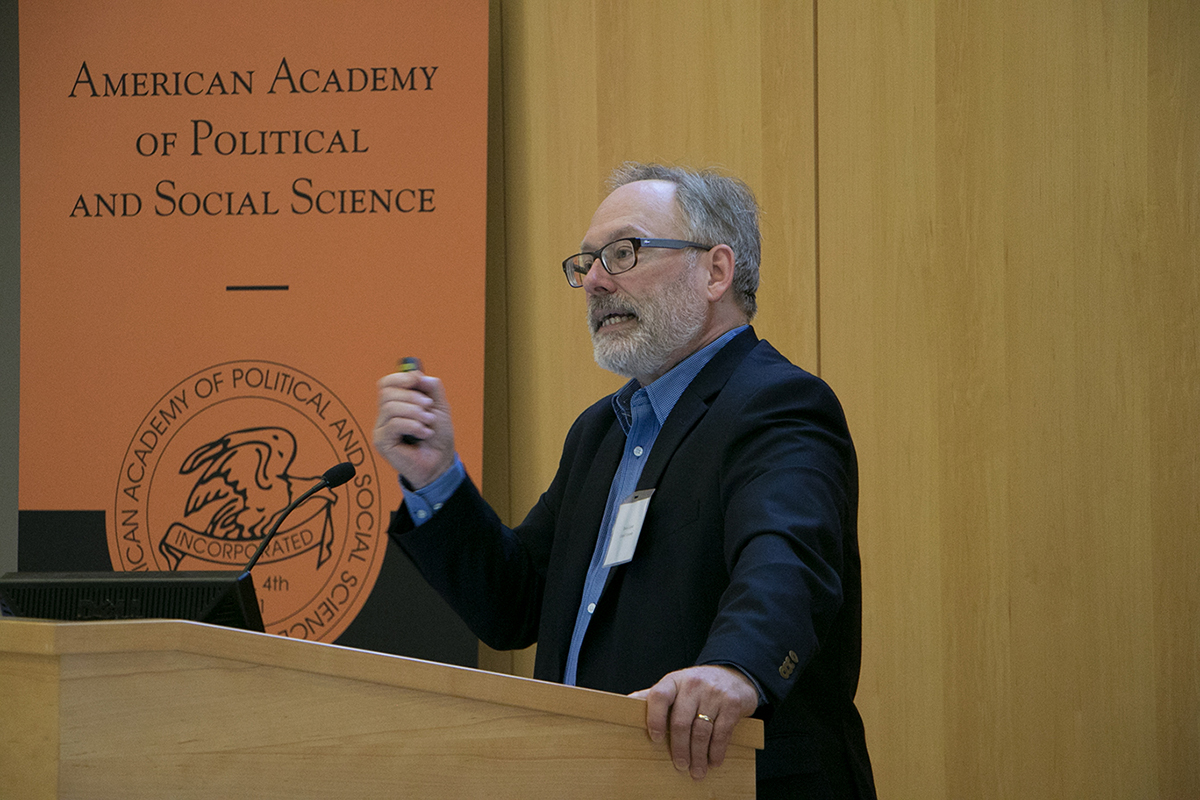Phenomena at rural-urban interface topic of conference
By Lori Sonken

“Rural and urban areas represent flipsides of the same coin” and the boundaries between the communities are ambiguous, said Daniel T. Lichter, the Robert S. Harrison director of the Institute for the Social Sciences (ISS) and professor in policy analysis and management.
Speaking at the Conference on the New Rural-Urban Interface held Sept. 29-30 at the Annenberg Public Policy Center of the University of Pennsylvania, Lichter co-organized the event with James Ziliak, an economist at the University of Kentucky. Social scientists from Cornell and other institutions came together to focus on the cultural, demographic, economic and political dimensions of the changing landscape. About 25 scholars discussed papers to be published in a special edited volume of The Annals of the American Academy of Political and Social Science (AAPS) in summer 2017.
David Brown, Cornell professor in development sociology, proposed “a conceptual framework to help policymakers consider how to design and implement programs in support of people and communities in the rural-urban interface.”
For example, watersheds illustrate a place-based governance structure that Brown and co-author Mark Shucksmith, director of the Newcastle University (U.K.) Institute for Social Renewal, said can bring environmental, economic and political entities together to develop durable multi-jurisdiction governance structures to manage natural resources in the rural-urban interface.
Erin York Cornwell, assistant professor in sociology, along with Matthew Hall, associate professor in policy analysis and management at Cornell, are using data from the 1985-2013 American Housing Survey to examine trends in neighborhood quality within cities, suburbs and rural areas. They examine the presence of neighborhood problems such as abandoned structures, building with bars on the windows and criminal activity.
“These neighborhood problems, which are historically most common in central cities, are increasing everywhere,” York Cornwell said. She and Hall also find growing gaps in exposure to neighborhood problems outside of the city, so that blacks and Latinos in outer-ring suburbs and rural areas are disproportionately likely to live in low-quality neighborhoods.
While policymakers have devoted significant attention to improving living conditions and reducing neighborhood inequalities within the central city, urgent attention is needed to address the residential disadvantages minorities are facing outside metropolitan areas, she said.
Another paper, co-authored by Christopher Wildeman, associate professor in PAM, along with John Eason, Texas A&M University, and Danielle Zucker from Yale University, uses data on all prisoners in Arkansas from 1993 to 2003, to show that rural and suburban areas both receive and produce prisoners.
“The rate of imprisonment and racial disparity in imprisonment are even higher in many rural and suburban areas than expected. Inequality in imprisonment is certainly not an exclusively urban phenomena,” Eason said.
Scholars from Brown, Columbia, the University of Pennsylvania, the University of North Carolina at Chapel Hill, and other academic institutions also attended. The conference was co-sponsored by the ISS, the AAPS, University of Kentucky’s Center for Poverty Research and the Finger Lakes branch of Scholars Strategy Network.
Lori Sonken is the staff writer with the Institute for the Social Sciences.
Media Contact
Get Cornell news delivered right to your inbox.
Subscribe